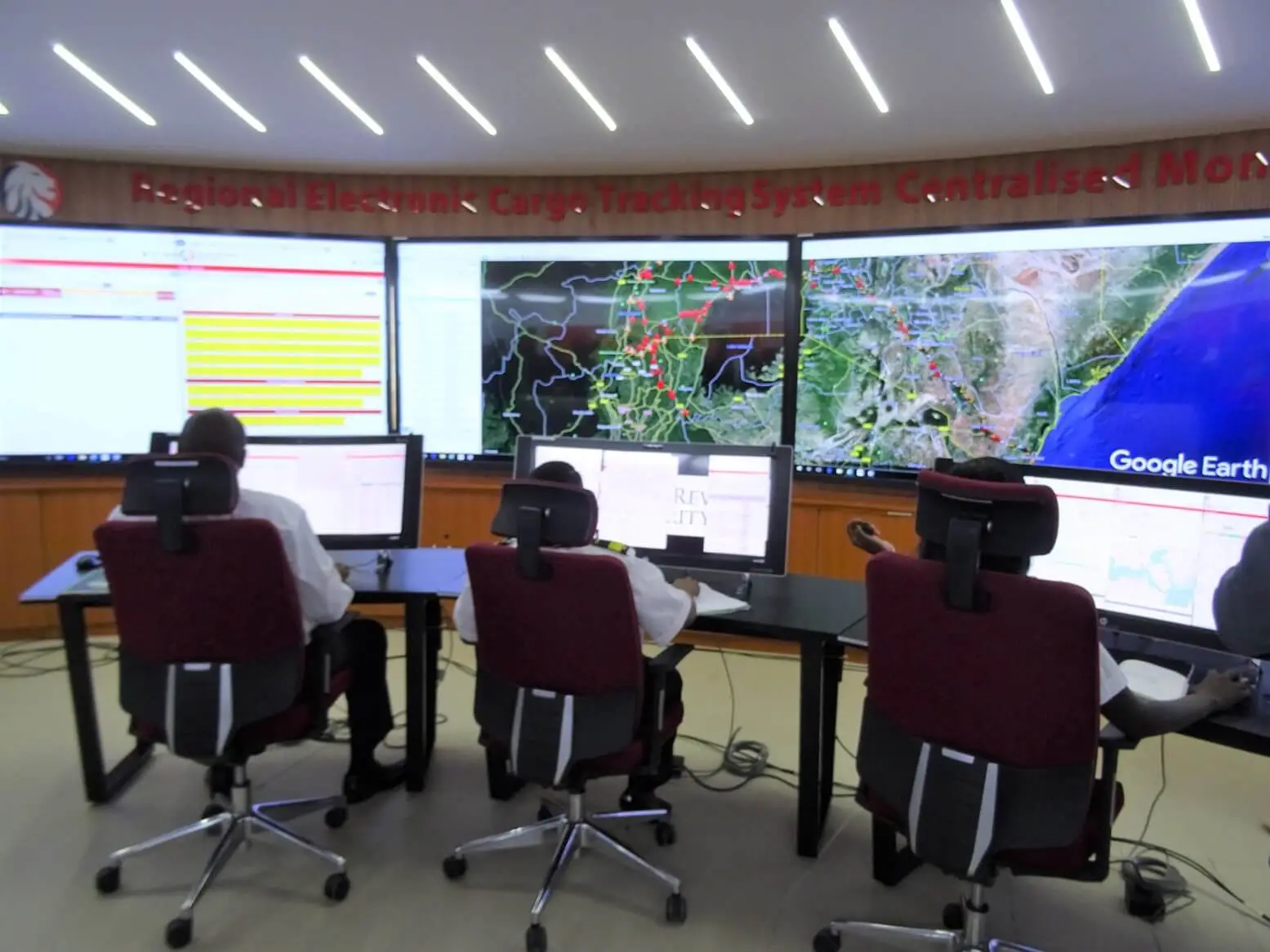“Armed men broke his windscreen and started hitting him with an iron bar. They stole the goods he was carrying and left him for dead. By the time help came, it was too late. He had died from excessive bleeding,”-Patrick Mutinda, former Truck driver.
East Africa’s Regional Electronic Cargo Tracking system (RECTS) has many benefits some of which include safety of cargo, expedited clearance at borders and reduced dumping. To many long-distance truck drivers, it has assured them of safety on the sometimes-treacherous transport corridors. RECTs is a webbased system that provides a harmonised platform for revenue authorities in Kenya, Uganda, Rwanda to monitor transit cargo from loading to offloading thus curbing cargo dumping, diversion among other risks. Over the years, cargo volume along transport corridor has increased and this raised the need to facilitate quick movement of cargo without compromising customs security controls. That is the well-known story. The untold story is that of long-distance truck drivers ferrying high risk and often in demand goods, whose lives have been saved from armed robbers by the rapid response unit attached to RECTs. Drivers like Mutinda.
Mutinda is a former long-distance truck driver. He recalls his perpetual discomfort driving along Kiu, a lonely hilly section of the Mombasa-Nairobi highway near Salama, as the area was known for armed gangsters who attacked cargo trucks. His friend lost his life in one such incidence. “My friend… as his truck slowed down, armed men attacked him, injuring him, and taking off with the goods he was carrying. He died from excessive bleeding,” recalls Mutinda.
And so, when Mutinda’s unlucky day arrived, he was luckier than his friend, because by then RECTS was already operational. On hearing commotion on top of his oil tanker, he dialled the emergency number that all cargo drivers had been issued with to report that his truck was under attack. “Soon enough several police vehicles were in hot pursuit of my petrol tanker. Then, I heard gunshots and some screams. When I eventually stopped the tanker, armed policemen were at hand to take a quick statement. Two of the gangsters had been apprehended with the third escaping with gunshot wounds,” says Mutinda.
Mutinda’s rescue is RECTs Rapid Response Unit (RRU) who are stationed at different points of the Northern Transport Corridor. In case of transit violations, system alerts are generated and the centralized monitoring centre staff dispatch to rapid response units to take action which may include moving to the scene, supervising transfer of cargo in case of accidents, transhipments, initiating investigations in case of theft etc. In Kenya, the teams comprise of customs and police officers who cover the Malaba and Mombasa- Busia highways.
His could have been one of the 28,258 alerts received by KRA’s Central Monitoring Unit in 2019.

Kenya Transporters Association (KTA) concurs that statistics of heavy commercial truck drivers being attacked, and goods stolen or diverted have dramatically reduced since introduction of RECTs. “Attacks on our drivers as well as theft of goods in transit have reduced significantly in Kenya because the 24 hour rapid response unit has been quick to act on any distress calls,” says Mercy Ireri, the Chief Operations Director of KTA.
Alban Odhiambo, TMA’s Sr. Director Trade Environment says that in addition to the peace of mind that safety of cargo affords transporters and truck drivers, the system has also reduced the time it takes for transit cargo to reach destination. Data from KRA shows that in March 2019, non-monitored goods took an average of 2.35 days while monitored goods took 1.75 days. This affords truck drivers more time to spend with their families, as well as reduced related logistical costs associated with longer duration journeys. Data from the regional monitoring centre shows that the system has saved the region US$ 10M since inception.
TMA invested US$14 million the system which is currently operational in Kenya, Uganda and Rwanda. Plans to roll out RECTs in Democratic Republic of Congo and South Sudan started in 2019.
Currently RECTs tracks goods classified as high risk such as those that can be diverted because of tax variation or their sheer value. “Since it’s a joint regional effort, Rwanda, Kenya and Uganda cargo tracking managers, agree on a profile of the high-risk consignment they need to track.” At the Mombasa port, the KRA working with representatives from tax agencies from Uganda and Rwanda decide which consignments will be monitored by using analytical tools to make the decision. The tools are based on value and type of product, diversion risk factor and value due to the destination country. Usually, target goods include textiles, sugar, tea, cigarettes, and rice.
Mercy says that the tracking system has enhanced business for the truckers who have adopted it. The system, she says, gives the transporters in the programme confidence of getting more clients because of the certainty that the cargo would reach its destination: “It has helped a lot because before its installation, one needed prayers for cargo to safely reach its destination. But now you can track your cargo from the comfort of your seat,” says Mercy. RECTs enables customs and revenue officials to account in real time where a consignment is along the corridor and whether someone tries to tamper with it or violate any transit regulation by diverting goods from the designated transit route.
She argues that the system also helps employers understand peculiar habits of drivers; for example, areas they have prolonged lay overs or rests. This is in addition to monitoring other operational issues which result in better decisions to improve efficiency.
Alban envisions a future where the system will link all key players in the cargo transport system; from cargo owners, to customs and revenue authority bodies, the security apparatus and banks so that at no point in the movement of cargo will there be reason for delay. Another key objective is to create an automated trade platform where several regulatory entities can share information in real time about consignments of interest. They can collaborate and work together to reduce the time it takes to go through border formalities or documentary compliance.
In recent times, RECTs has proved beneficial in monitoring the safety of truck drivers amidst Covid-19 pandemic. For example, in Uganda, the Revenue Authority used RECTs to track down a driver who had tested positive for Covid-19, therefore preventing him from risking the lives of his family and other people he interacted with. TMA rolled out a driver tracking app that capitalised on the RECTs platform with the EAC partner states. Aptly named Regional Cargo and Driver Tracking System (ReCDTs), this is a monitoring and surveillance tool for cargo and driver movement along the corridor. ReCDTs enhances compliance to health measures among truck drivers to contain spread of the virus.


